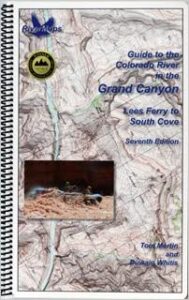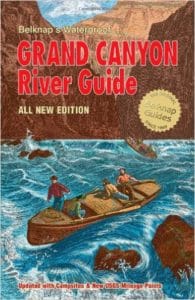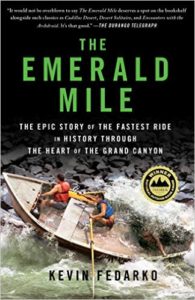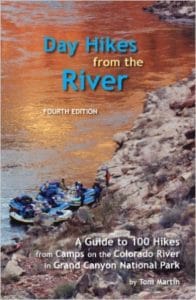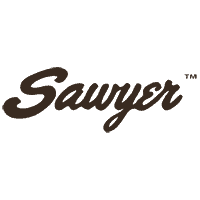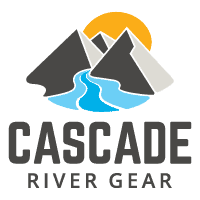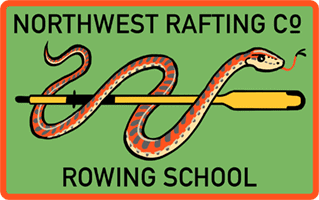A Grand Canyon rafting trip on the Colorado is one of the best river trips in the world. That's a bold statement, but most who have spent time there will agree that it is a life changing experience. It's not just the whitewater, but about spending up to 3 weeks in a remote desert with some of the most dramatically stunning scenery in the world. It’s the Grand Canyon!
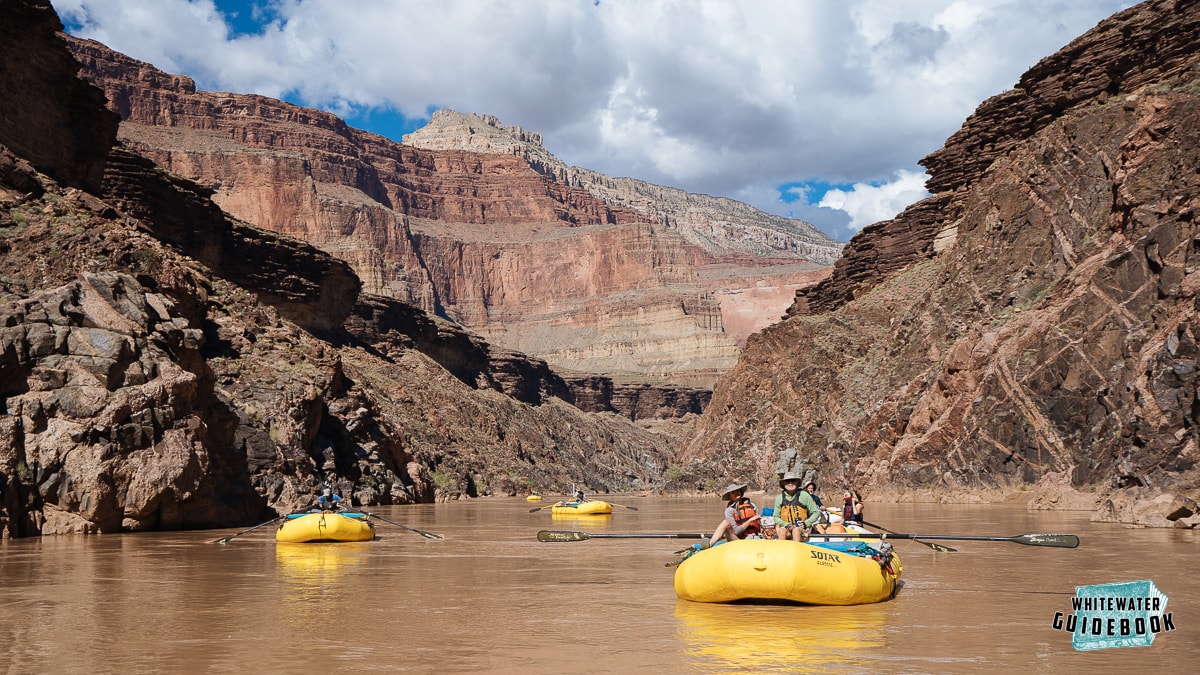
Rafting through the Grand Canyon
The whitewater is fairly straightforward big water Class III with a few Class IV/IV+, but has its own rapid rating system from 1 - 10. The rapids are spread out and at times the pools in between the rapids are several miles long. The biggest rapids are Crystal and Lava Falls which are both intimidating and have a good chance of flipping your raft.
Featured Outfitter
 Rivers and Oceans (928) 526-4575 Since 1987 we have worked with and booked trips for all the oufitters in Grand Canyon. We are your resource for Grand Canyon Rafting including 1-day and 2-day
Rivers and Oceans (928) 526-4575 Since 1987 we have worked with and booked trips for all the oufitters in Grand Canyon. We are your resource for Grand Canyon Rafting including 1-day and 2-day
Most people take 14 - 21 days to complete the 227 mile journey from Lee's Ferry to Diamond Creek. If you're doing a private trip you'll need to be at Lee's Ferry the day before you launch to rig your boats. After rigging, you'll row your boats about 100 feet downstream to the boat camp. The next morning a NPS ranger will check IDs and life jackets, give you a final talk, and send you on your way. If you can’t steal away for 2-3 weeks, it’s possible to do a shorter trip by hiking into or out of Phantom Ranch at mile 88 or doing as few as 10 days on a 39-foot motor rig.
While the river runs year round, each season offers a unique experience. In the summer, the Colorado is its quintessential brown color from the flash floods that flow in from the hundreds of side canyons. Average daily temperatures are in the 100's and afternoon thunderstorms are common in late summer/fall. Summer flows are often the highest of the year. Springtime flows are lower, the water is less muddy but perhaps a bit colder, and the daytime temperatures range anywhere from the 60's to the 90's. Afternoon winds are more common, and can prove exhausting. The weather is a bit less predictable in March and April, but the wildflowers are abundant. Many consider April and May the best times to go. Only the hardy choose to go in winter when it is often raining or snowing.
Many people agree that the best part of a Grand Canyon rafting trip are the side hikes. Most of the hikes are up creeks like Tapeats or Havasu and range from an easy 1/2 mile walk to more difficult rock scrambles. There’s plenty of hiking opportunities for a wide variety of activity and ability levels all leading to or through awe-inspiring geography. You can visit archeological sites to see pictographs, petroglyphs, or find pottery shards or you can hike up to hidden waterfalls bursting out of rock walls.
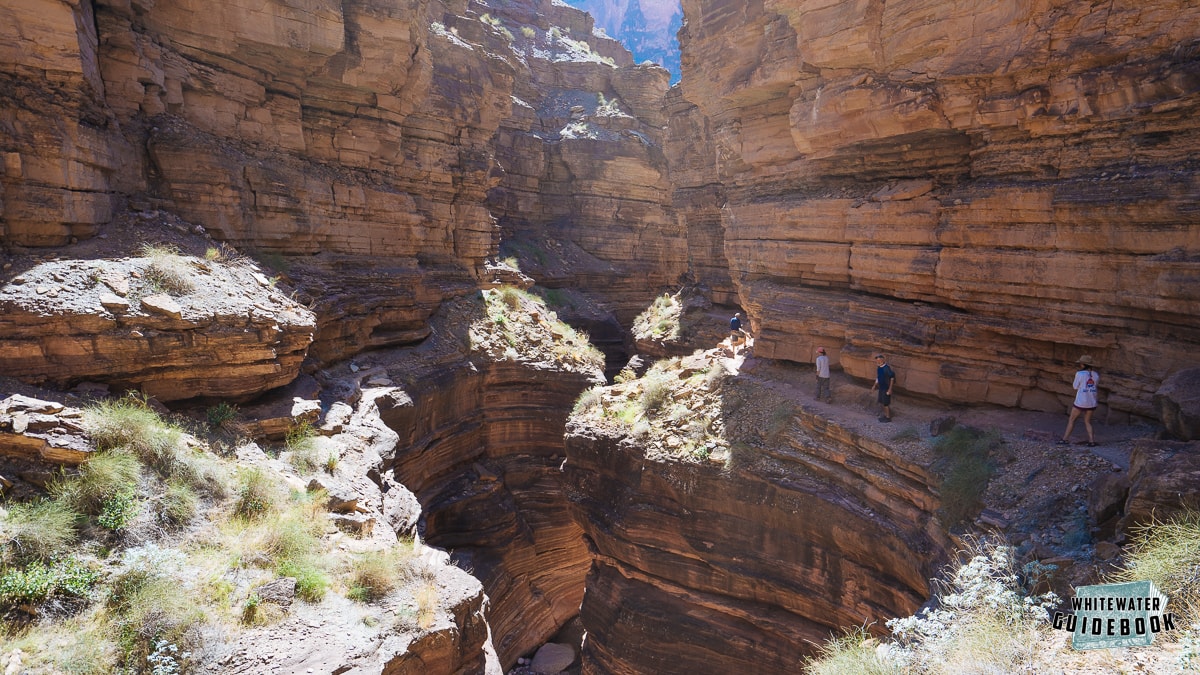
Hiking along Deer Creek in the Grand Canyon
The Grand Canyon is a geologist’s dream come true, and even the most unlearned will come away with a ton of new knowledge about the formation of the Canyon, geologic features, and the names of a variety of different rocks and minerals.
The camps along along the Colorado are kept in pristine condition. There is a stringent “Leave No Trace” policy and the 30,000 people that go down each year do an impressive job of adhering to it. Most camps offer plenty of space for a kitchen, camp chairs, widely spaced tents and nooks to steal away if you need some alone time.
Trip Highlights
Mile 0: Put-in at Lee's Ferry.
Mile 4.5: Float under the the Navajo Bridge.
Mile 17: House Rock Rapid (III) is the first size-able rapid on the Grand Canyon and is usually scouted on river left.
Mile 24.3: Georgie Rapid (III) is a tricky rapid named after Georgie White.
Mile 33.3: Redwall Cavern is a humongous cavern on river left. No camping allowed here, but perfect for lunch, playing music, or a rousing bocce game.
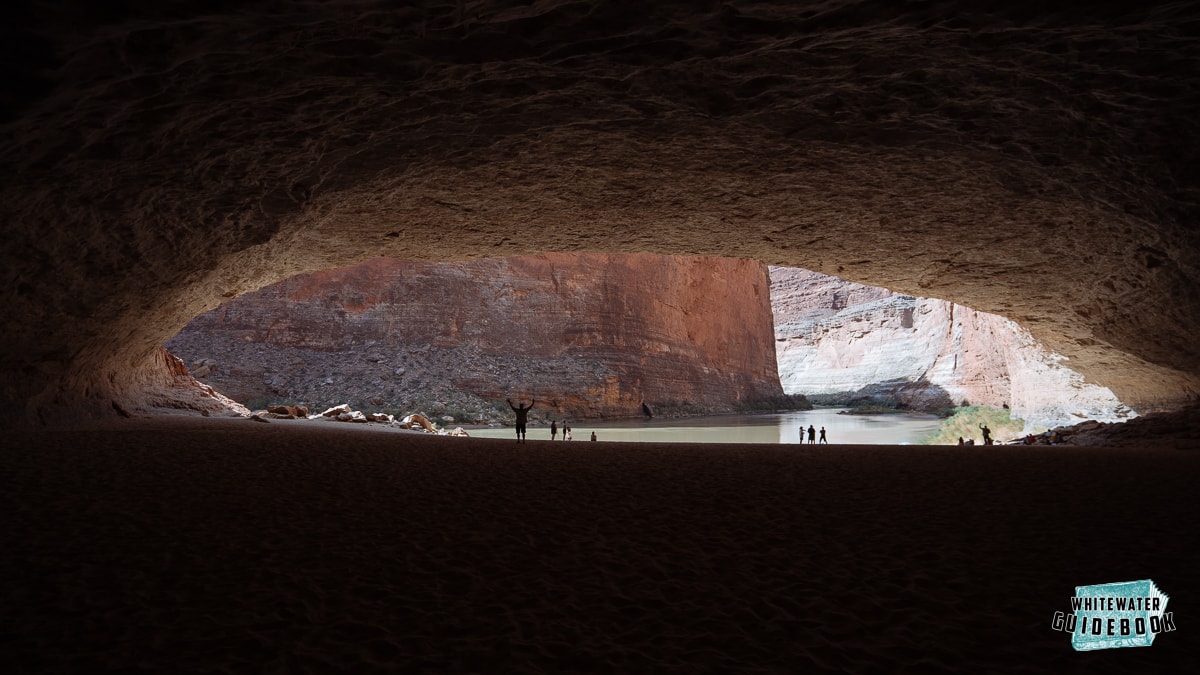
Redwall Cavern
Mile 44: President Harding Rapid (III-) has a big boulder that is fairly easy to miss.
Mile 53.4: Nankoweap is a wonderful stop for camping and/or going for a hike to the Nankoweap Granaries. Visiting the granaries is an iconic stop that offers a wonderful view downstream.
Mile 61.7: The Little Colorado River enters river left. It has beautiful turquoise-blue water if it hasn't been muddied by upstream rains.
Mile 72.9: Unkar Rapid (III+) is a tricky rapid that make a good warm up for Hance.
Mile 76.5: Hance Rapid (IV/IV+) is the first big rapid and should be scouted from the right side. The goal is to enter on the right side and get left into the "Duck Pond Eddy" which will help you avoid holes on the right.
Mile 79.1: Sockdolager Rapid (IV) is generally run down the center.
Mile 88.2: Pull over at "Boat Beach" to walk up to the historic Phantom Ranch. This is a popular stop for both rafters and hikers to purchase a snack and other supplies.
Mile 90.8: Horn Creek Rapid (IV+) marks the beginning of the Upper Granite Gorge and is generally scouted from the right shore. There are two large pourover holes on the left side known as the "Horns" that some people go in between.
Mile 94: Granite Rapid (IV) is a long rapid generally scouted on the left bank just downstream from Granite Camp.
Mile 95.5: Hermit Rapid (IV) is a long wave train.
Mile 98: Crystal Rapid (IV+) if one of the largest Grand Canyon rafting rapids.
Mile 106.5: Serpentine Rapid (IV) is the last of a fun series of rapids between mile 100 and 107.
Mile 131: Bedrock (IV+) is one of the more consequential rapids in the Grand Canyon and should be scouted on the right. The goal is to get right of the big rock island. Many boaters don't make it right which can flip boats and/or hold boats in a catchy eddy.
Mile 132.3: Dubendorff Rapid (IV) is a challenging rapid soon after Bedrock that is normally scouted on the left.
Mile 134.3: Tapeats Creek enters on the right side.
Mile 136.9: Deer Creek Falls enters from the right side. There is an awesome hike above the Deer Creek Narrows here.
Mile 150.1: Upset Rapid is a challenging one with a big hole in the middle. It is generally scouted on the right.
Mile 156.8: Havasu Creek on river left is a major tributary to the Colorado of stunning turquoise water. The quintessential side hike of the Grand Canyon, it is often crowded with other boaters as well as hikers and backpackers.
Mile 178.2: Vulcan's Anvil is a large volcanic rock signaling that Lava Falls is coming soon.
Mile 179.3: Lava Falls Rapid (V) is the most famous rapid in the Canyon. After running Lava, pull over river right to the recovery eddy (a.k.a "Tequila Beach") to toast getting through all of the largest rapids in the Grand Canyon.
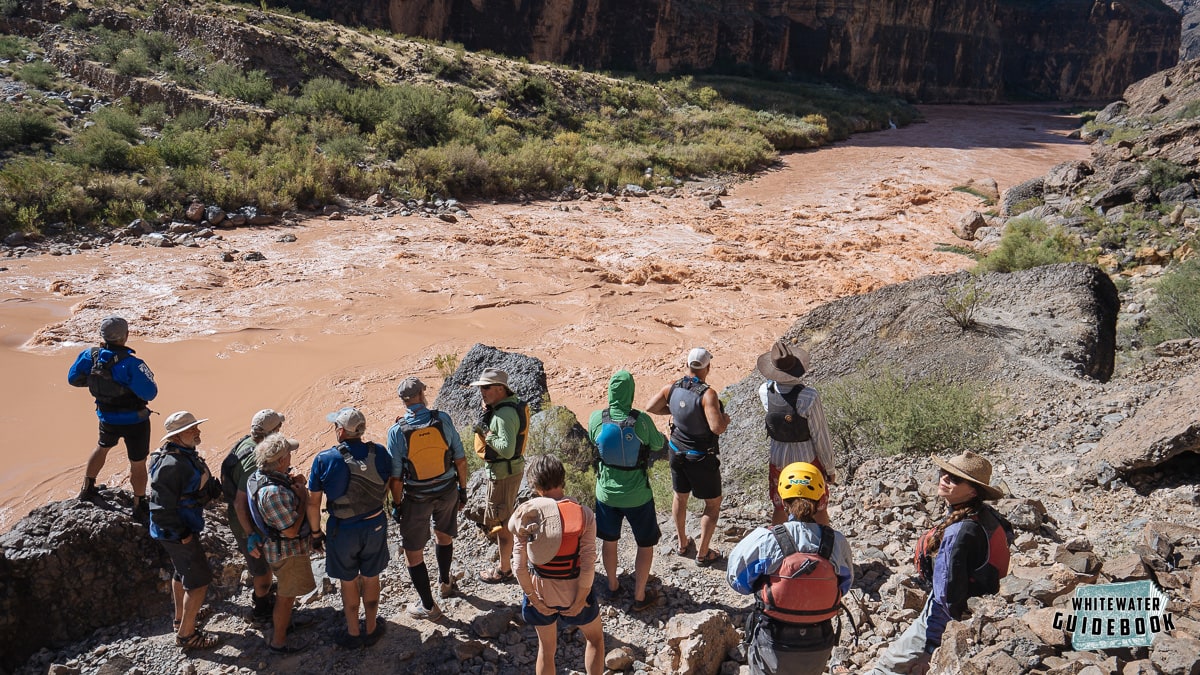
Scouting Lava Falls
Mile 205.8: 205 Mile Rapid (III) is the last tricky rapid.
Mile 225.9: Take-out at Diamond Creek or continue downstream to Pierce Ferry. The Diamond Creek take-out is on Hualapai Indian Reservation land and requires a pre-arranged permit to use.
Mile 280.5: Take out at Pierce Ferry.

